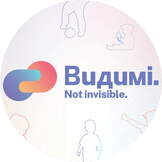Autism Spectrum Disorder (ASD) is a lifelong mental disorder characterized by impaired social communication, repetitive limited patterns of behavior, and unusual sensor or sensitivity interests.
ASD diagnosis significantly affects children and their families ordinary life. Pediatricians, physicians and other healthcare professionals are increasingly accepting children with ASD into their practice. ASD diagnosis and referral to specialists at an early age can lead to better long-term results through the use of the brain’s neuroplasticity at a young age.
The following clear, comprehensive, evidence-based tool is about helping parents and professionals to track ASD early signs as an important step toward accurate diagnosis and comprehensive needs assessment for intervention planning.
Signs at which autism can be suspected:
Social interaction and communication disorders (all three sub-criteria required)
- Social protection and emotional reciprocity:
Difficulty initiating or strange reactions to social interactions.
Decreased spontaneous exchange of emotions (eg, joy).
- Nonverbal behavior violations:
Decreased eye contact during communication.
Limited gestures use (eg, waving).
Reduced facial expressions.
Can use someone’s hand to get the desired object without looking into the eyes.
-Inability to develop and maintain relationships:
Decreased or atypical interest in peers.
Difficulties in creative play with peers.
- Abnormal and limited repetitive behavior, interests and actions (requires at least two of four sub-criteria)
- Stereotypical language and behavior:
Repeated words, phrases (from TV shows or movies).
Repeated actions with objects.
Repeated movements of the body, hands or fingers (eg, rotation, waving).
Temporary restrained position of the arms or the whole body.
- Resistance to change:
Wear the same clothes (or the same color) every day; the same food every day.
Trouble if the usual route is changed.
- Limited interests:
Topics and/or subjects that are unusually important or narrow.
Sensory hyper- or hyposensitivity:
Unusual reactions (fascination with smells, sounds, textures, types and tastes)
- Signs or symptoms should be detected at an early stage, but they may not be fully manifested for some time, may be masked by social requirements.
- Symptoms interfere with normal life.
- Symptoms cannot be attributed to mental retardation or developmental delay.
- ASD can occur with or without medical, genetic, mental or behavioral disorders, disorders of the nervous system, as well as intellectual or speech disorders.
ASD symptoms usually appear between the ages of 12 and 24 months. Initial perceptions differ, and there is no single behavioral sign that would provoke ASD diagnosis or would be absent. Initial parental concerns may include delayed language development, lack of response to the child’s name, and limited eye contact.
Developmental screening is a flexible process when clinicians gather relevant information over time from different sources (including parents and through direct observation) in order to identify and address developmental problems. This includes an assessment using standardized indicators to identify children at increased risk of delay or disorder. Studies vary (eg, parental report versus direct assessment of the child) and coverage. Screening also varies due to the target. Universal screening targets all children, whereas targeted screening selects a subpopulation based on pre-established risk factors.
Risk factors
6-12 months – Reduced reactions or other joyful expressions aimed at people, limited eye contact or lack thereof, limited sounds exchange, atypical or absent chatter or gestures, limited response to the name
9-12 months – Repetitive behavior, unusual play (intensive visual or tactile examination of toys)
12-18 months – No speech, no compensatory gestures
15-24 months – Atypical or absent spontaneous or meaningful two-word phrases
24+ months – Loss of skills, decreased frequency or loss of social behavior and communication compared to an earlier age

